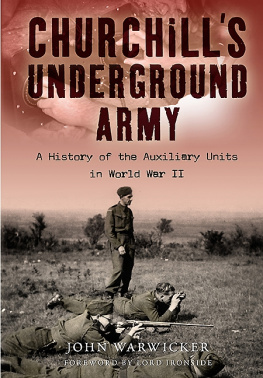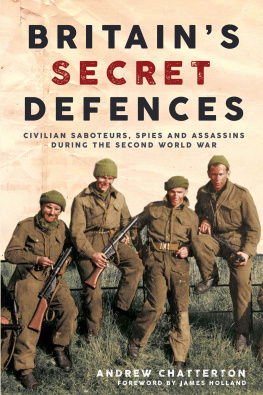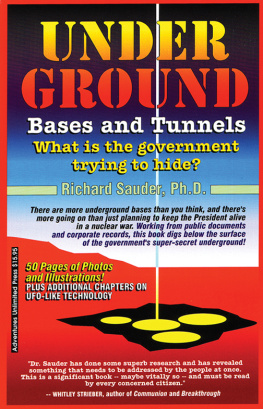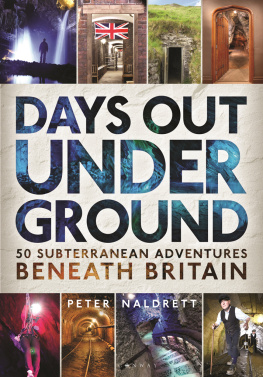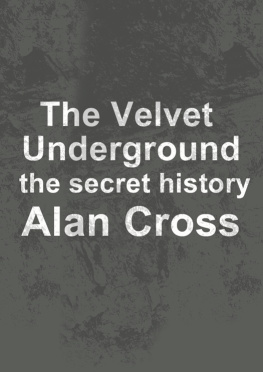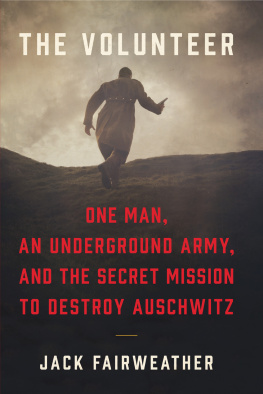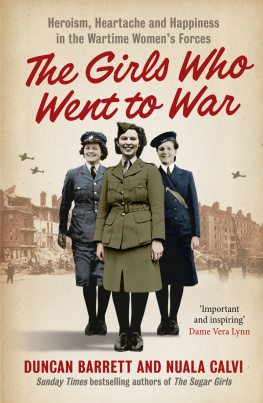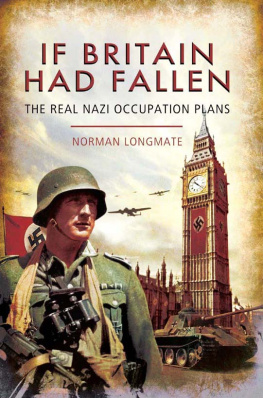Acknowledgements
I must first thank Members of the Museum of the British Resistance Organisation part of the Parham Airfield Museum complex, near Woodbridge in Suffolk for providing access to all the good things the Museum has to offer, and which provided many short cuts for research. Patrons and Friends, and many veterans, relatives and supporters on the mailing list, have been a conduit for the accumulation of unique, high quality archive information, exhibits and expertise. In particular I must thank former curators Graham Bines, Raymond Carter, Carl Raby, and weapons expert and volunteer guide Richard Ashley, for their guidance, knowledge, and dedication to authenticity.
Lord Ironside, the principal Patron of the BRO Museum, and Lady Ironside have been greatly encouraging and supportive throughout.
It is not possible to name every single helper; after all, some just arrived as visitors to the Museum, then handed over documents or exhibits as anonymous donations and disappeared again. Having been steeled in the need for secrecy from the very start, they saw no reason not to continue. In some cases, donors opted to place into proper custody, long treasured items of debatable provenance and ownership.
Very special thanks are due to Auxiliers Robert Millard (Bathampton Patrol) and Donald Handscombe (Thunderseley, Essex), both of whom unstintingly contributed their research, and reminiscences of life within typical or untypical Auxiliary Units Operational Patrols. Similarly, Lieutenant-Colonel Norman Field, OBE, after recharging his memory, painted a unique picture of his findings in, and development of, the XII Corps Observation Unit. Photographs have been assembled from the many offered by veterans and their families but special thanks must go to Nora Trego for providing unique action images of her husbands Sandford, Dorset, Auxunits patrol during training.
Prominent among those helping were the late Yolande Alston and her family; William E. (Bill) Bartholomew; the late Brigadier Geoffrey (Bill) Beyts, DSO, MBE, MC; Geoff Bowery; the late Geoff Bradford; Donald Brown, author of Somerset versus Hitler ; the late Reginald F. J. (Rex) Chaston and his family; Ronald Chisnall; Ralph Clarke; Roy Coleman; Colin Cooke; Captain Barbara Culleton, TD; Colin Durrant; the late Lieutenant-Colonel J. W. Stuart Edmundson, TD, and his family; Ann Fielding and her late husband John; Major Peter Forbes; Gerry Fryer; the late Arthur Gabbitas; Eric Gray; C. Jack Grice; the late Major R. F. Hall, MC; Alwyn Harvey; Stephen Hogben; Kate Ingram; the late Herman Kindred; the late David Ingrams; the late Stanley Judson; Roy Lewis; Bernard Lowry; Paul McCue; Jill Monk; Ivan Mower; Daphne and Ken Nunn; Joy Oxenden; the late Peter Robins; Lieutenant Roy Russell; Alison Smith; David Steed; Chris Stennet; Doris Steward; Andrew Taylor; Phil Tomaselli; Captain Ken Ward; Dr William Ward; John Williams; and the late Miss E. (Willie) Wilmott. WWII researchers Mick Wilks and Bernard Lowry, authors of The Mercian Maquis , and Tim Wray have never tired in their dedicated quest to penetrate the mysteries of the Auxiliary Units and have conscientiously passed their findings along the line and given unconditional permission for their use.
I have been given unrestricted access to the field work of Dennis Walker in the north-east of England, and the North Yorkshire and Cleveland WWII Study Group has kindly supplied technical drawings. Research carried out in the National Archives by Tony Evans has provided critically important insights into hitherto firmly prohibited territory.
The remarkable research undertaken by a dedicated team from the Vintage and Military Amateur Radio Society (VMARS), headed by Richard Hankins, has provided the first detailed description of the design of the unique radio transceiver operated by the Auxiliary Units Special Duties Section. VMARSs skills and research over a number of years have been invaluable.
Transcription from original audio archive material was kindly undertaken by the late Christine Montagu and Captain Barbara Culleton, TD.
For Frontline/Pen and Sword Books, Michael Leventhal has been a model of courtesy and a fund of wisdom and good advice; and his Senior Editor, Kate Baker, has produced a series of invaluable guidelines with the greatest patience and good humour.
Finally, special appreciation is due to Ann Mary Warwicker who encouraged the author to dedicate three of his remaining years to this project and who was blessedly on hand to unravel the complexities of the modern electronic age on the not infrequent occasions when they were beyond normal understanding.
All National Archives material is Crown Copyright and reproduced with the permission of Her Majestys Stationery Office. Copyright commitments have been taken seriously and apologies are offered where attributions may inadvertently been less than adequate.
Appendix One
Auxiliary Units Weapons
These data have kindly been compiled for the author by Bathampton Auxilier Robert W. Millard, and militaria collector and former REME armourer Richard Ashley. Although issues of firearms varied from patrol to patrol the following list details weapons identified from personal experience, research and discussions with other patrol members.
Enfield US Rifle P.1917
Weight: 9 lb
Overall length: 46.5 in
Action: Mauser bolt
Cartridge: 30-06 Springfield
Sights: Adjustable aperture rear sight/blade foresight; sights from 200 1,600 yd; battle sights at 400 yd
Muzzle velocity: 2,700 fps
Bullet weight: 11 grm
Capacity: 5-round magazine
Winchester Model 61
The Standard version of this rifle had a straight stock whilst the Expert version had a pistol-grip stock.
Weight: 6 lb 4 oz
Overall length (with silencer): 50 in
Barrel length: 20 in
Action: Slide (Pump)
Cartridge: 0.22 in Short, Long or Long Rifle
Sights: Blade foresight, Winchester Model 32 rear sight, Winchester A8 scope
Capacity: Under-barrel tubular magazine accepting 20 Short, 16 Long or 14 Long Rifle rounds
Winchester Model 697
This rifle has a barrel-mounted telescopic sight and no iron sights to allow a lower mount that gave a lower sight line, less error and greater rigidity. Winchester had designed a new light telescopic sight for this rifle and these were designated No. 3, No. P3 and No. 5, the numbers indicating the approximate magnification of the telescope. P indicated the telescope was a post, not cross-hair, sight. The walnut woodwork comprises a stock with pistol grip and forearm. The stock is fitted with a hard rubber shotgun butt plate. There are fittings for a 1-inch sling.
Weight: 5 lb
Overall length (with silencer): 52 in
Barrel length: 25 in
Action: Bolt action
Cartridge: 0.22 in Long Rifle
Sights: Barrel-mounted Winchester No. 3, No. P3 or No. 5 scope
Capacity: 5- or 10-round box magazine
Winchester Model 74
This model uses a spring to prevent the opening of the bolt before the bullet has left the barrel. This action permits standard or high velocity rounds to be fired, although the gun performs more reliably with the high velocity round. Initially chambered for 0.22-inch Short, models after serial number 97,000 (mid-1941) were chambered to accept Short, Long and Long Rifle rounds. A number of rifles made in 1939 were chambered for Long Rifle only and were marked accordingly. The safety catch is located on the top of the receiver and operates by locking the guns sear. The stocks are uncapped pistol grip stocks, have checkered steel butt plates and semi-beavertail fore-ends. Early stocks are 1 inches thick, later ones 1 inches thick. The early models have small loading ports in the stock; on later models this port is nearly double the size.

